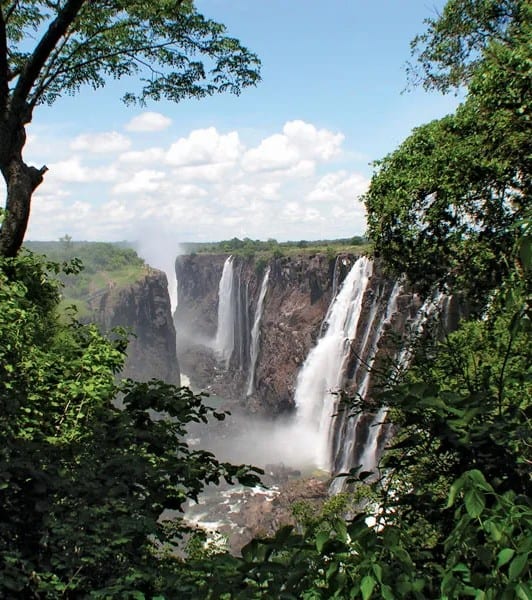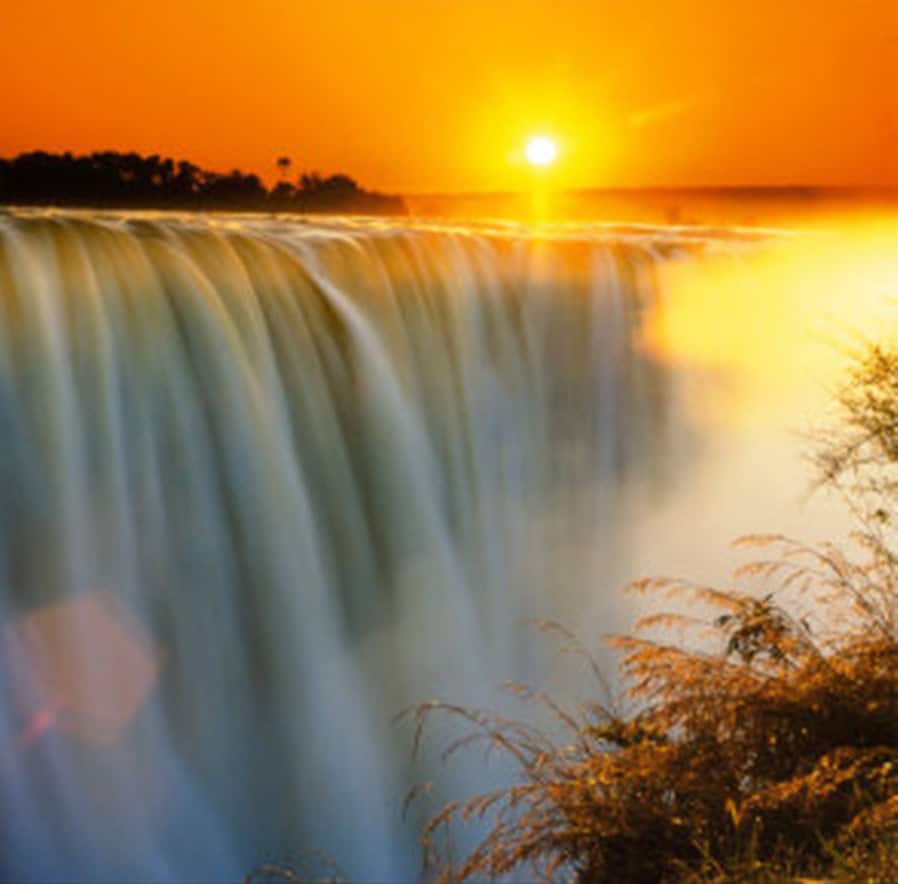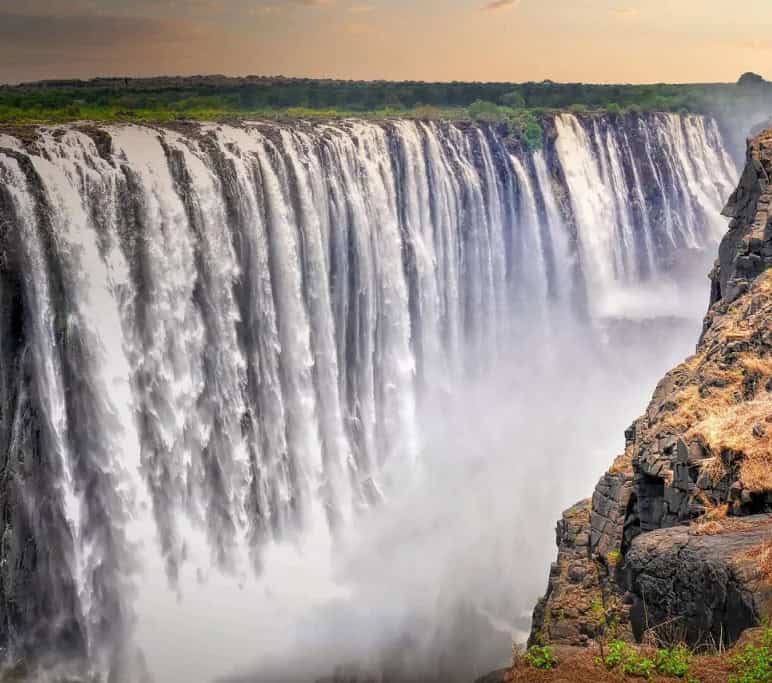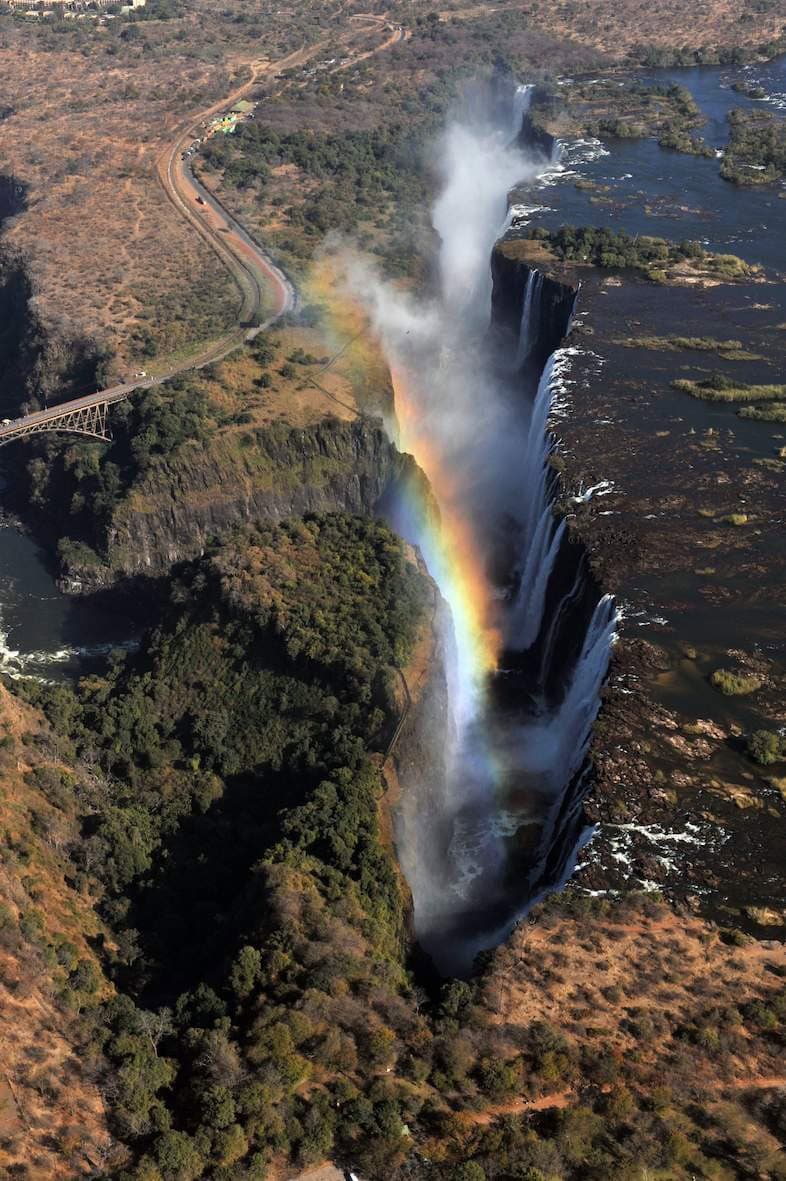History of Victoria Falls
The Story of Victoria Falls: A Journey Through Time
Victoria Falls isn’t just a natural wonder, it’s a living, breathing story carved by time. From ancient legends whispered through misty spray to the colonial-era explorers who first put it on Western maps, this waterfall has witnessed it all.
But its history isn’t just about dates and discoveries. It’s about the people who lived in its shadow, the cultures that revered it, and the changes that shaped its future.
Before the Maps: Indigenous Legends and Early History
Long before European explorers arrived, the local Batoka, Lozi, and Tonga peoples had their own stories about the falls.
To them, it was Mosi-oa-Tunya, “The Smoke That Thunders,” named for the towering mist and the deafening roar that echoes for miles. They believed the falls were sacred, home to powerful spirits.
One legend speaks of Nyami Nyami, the Zambezi River god, a serpent-like deity believed to control the waters. It was said that when the river raged, it was Nyami Nyami showing his power.
Even today, some elders in the region hold ceremonies to honor him, hoping for safe passage along the river.

Enter the Europeans: David Livingstone’s Discovery
When Scottish explorer David Livingstone first set eyes on the falls in 1855, he was in awe. He described it as “scenes so lovely they must have been gazed upon by angels in their flight.” He named it Victoria Falls after Queen Victoria, but the original name, Mosi-oa-Tunya, remains widely used.
Livingstone’s journey wasn’t easy, malaria, wild animals, and treacherous terrain made exploration a serious challenge. But his writings put Victoria Falls on the world map, and soon, European interest in the region grew.
The Colonial Era and the Birth of Tourism
By the early 1900s, the British South Africa Company, led by Cecil Rhodes, had grand visions for the region. His dream? A railway from Cape to Cairo, passing right over the Zambezi.
In 1905, the Victoria Falls Bridge was completed, an engineering marvel spanning the gorge, bringing travellers within mist-spraying distance of the falls.
With the railway came luxury hotels, like the Grand Victoria Falls Hotel, catering to the wealthy and adventurous. Safaris, boat cruises, and guided tours turned Victoria Falls into a must-visit destination.


Independence and a Changing Identity
The falls sit on the border between Zimbabwe and Zambia, both of which gained independence in the latter half of the 20th century. As colonial rule ended, both countries embraced their heritage, promoting local names and stories. Mosi-oa-Tunya National Park in Zambia and Victoria Falls National Park in Zimbabwe were established to protect the falls and the surrounding wildlife.
Tourism continued to boom, but political instability in Zimbabwe during the early 2000s briefly impacted visitor numbers. However, Victoria Falls remains resilient, today, it’s one of Africa’s premier travel destinations.
Modern Conservation and Future Challenges
While the falls have stood for thousands of years, modern challenges threaten their future. Climate change has led to fluctuating water levels, with some dry seasons leaving parts of the falls nearly dry.
Conservation efforts focus on protecting the Zambezi’s delicate ecosystem, ensuring future generations can witness this wonder.
Meanwhile, sustainable tourism initiatives are taking root, promoting eco-friendly lodges and responsible wildlife experiences.
More Than Just Water
Victoria Falls isn’t just a waterfall. It’s a crossroads of history, culture, and nature. Whether you see it from the Zimbabwean side, where the views are panoramic, or from Zambia, where you can feel the mist up close, one thing is sure, you’re standing in the presence of something ancient and powerful.
So next time you hear the thunder of the falls, remember: it’s not just water crashing down. It’s history speaking.

